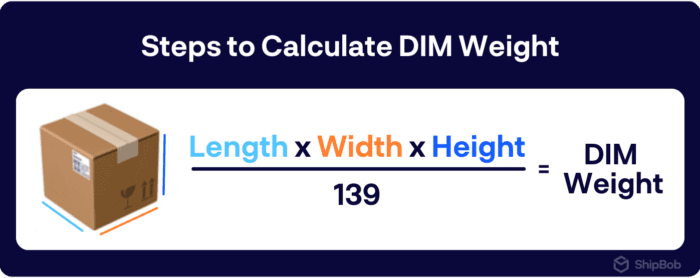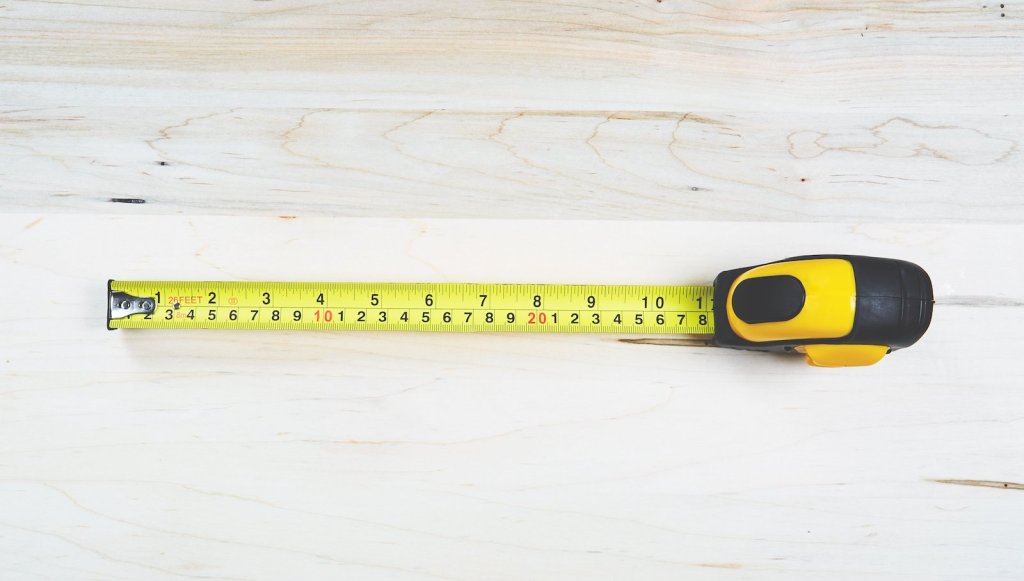
How to Calculate Dimensional Weight & Pricing (Across Couriers)
Skip the Scroll — Download the PDF
Download this blog as a PDF to revisit it whenever you want. We’ll email you a copy.
Key Takeaways
1
Dimensional weight is a pricing method used by couriers to calculate shipping costs based on the space a package occupies rather than its actual weight.
2
To calculate dimensional weight, multiply the package’s length, width, and height, then divide by a DIM divisor set by couriers like FedEx or UPS.
3
Couriers charge based on the greater of the actual weight or dimensional weight, which helps optimise cargo space and manage operational costs.
4
Using dimensional weight encourages efficient packaging, reducing wasted resources and potentially lowering shipping costs for shippers.
One major factor in the pricing of shipments is dimensional weight. But what exactly is it?
Dimensional weight is a pricing technique used to calculate the amount of space a package takes up in relation to the item’s weight. Because dimensional weight isn’t simply the physical weight of your package, figuring out an item’s dimensional weight and the subsequent price to ship the item can be challenging.
Whether you ship orders yourself or work with a third-party logistics (3PL) partner, you will likely encounter this pricing technique and need to navigate dimensional weight so you aren’t incorrectly charged for shipping your products.
In this blog, we’ll explore what dimensional weight is, how to calculate it, DIM weight pricing, and more. Read on to learn more about dimensional weight and how it affects pricing.
Table of Contents
** Minutes
What is dimensional (DIM) weight?
How to calculate dimensional weight (formula)
Industry-leading fulfilment & pricing transparency with ShipBob
What is dimensional weight (dim weight)?
Dimensional weight, also called DIM weight, is a pricing technique used for commercial freight transfer, including courier and postal services. Dimensional weight is computed by multiplying length times width times height.
Since the amount of space on a delivery truck is limited, dimensional weight takes into account package density to determine shipping rates. So even if you have a lightweight package, it could be worth it to calculate DIM.
Freight couriers like USPS, Fedex, or UPS calculate shipping charges based on whichever number is greater: the actual weight of the package or its calculated dimensional weight. Whichever is higher becomes your billable weight.


How does DIM pricing work?
DIM pricing refers to shipping costs that factor in the dimensional weight (DIM) into the overall price it will cost to ship a package. If the DIM weight exceeds the actual weight of the item, the DIM weight is then used to calculate the price instead.
Before 2015, major shipping companies had a simple formula to calculate costs of shipping items. The weight of the item, and the distance the item needed to travel were the standard factors influencing the price of shipping. The greater the weight and the greater the distance the more expensive it was to ship. However major couriers have recently begun adding a third factor into their formula; the size of the item to be shipped.
If you are shipping a very lightweight item but in a gigantic box, the gigantic box takes away valuable storage space in transit. So, because of this we now see DIM Pricing, which adds the volume of a packing being shipped into account.
How to calculate dimensional weight (formula)
To calculate dimensional (DIM) weight, multiply the length, width, and height of a package, using the longest point on each side. Then, divide the cubic size of the package in inches by the DIM divisor to calculate the dimensional weight in pounds.
Note: For non-square packages, you would take the longest dimension on each side and round up.

Steps to calculate dimensional weight
Step 1: Measure the length, width, and height of a package, using the longest point on each side. These measurements should take into account any bulges or misshapen sides, as irregularities can incur special handling fees if not incorporated into the initial calculations for dimensional weight.
Step 2: When calculating dimensional weight, most shipping couriers request that you round up to the nearest whole number.
Step 3: Next, multiply those package dimensions to get the cubic size of the package. For example, if your package is 30 inches by 12 inches by 12 inches, your package size is the product of these three measurements multiplied: 4,320 cubic inches.
Step 4: Finally, the cubic size of the package is divided by a dimensional factor, also called a DIM divisor. DIM divisors are numbers set by the major freight couriers, such as UPS and FedEx. These factors represent cubic inches per pound.
How couriers like Fedex calculate dim weight
The current DIM divisor used by FedEx, for example, for both domestic and international shipments is 139 cubic inches per pound. Using our example above, you would divide 4,320 by 139 to get a dimensional weight of 31 pounds. Here’s how a shipping carrier would charge for the package in this example:
- If the actual weight of the package is less than 31 pounds (e.g., 29 pounds), the carrier will charge for the dimensional weight of 31 pounds since it is the greater number.
- If the actual weight of the package is more than 31 pounds (e.g., 33 pounds), dimensional weight pricing will be based on the actual weight, not the dimensional weight, since they charge for the greater number.

NOTE: The above DIM weight formula uses the DIM divisor used by couriers like FedEx and UPS for shipments sent by individual customers or brands with low order volume. ShipBob offers a DIM divisor of 166 to its merchants for US domestic orders. To use the DIM weight formula as a ShipBob merchant, substitute 139 with 166 to the equation above and solve to find your DIM weight. To learn more about ShipBob’s DIM divisor, check out our DIM Divisor Help Centre Article.
If you’re uninterested in the hassles and expenses of self-fulfilment, you might need a fulfilment partner like ShipBob.
Dimensional weight calculator
Why is dimensional weight important?
Dim weight plays an important role in the logistics and transportation process. The use of dim weight helps couriers ensure fair billing and pricing and encourages shippers to efficiently package their goods. This results in optimised cargo space for the carrier, less wasted resources (e.g., fuel emissions, packaging materials, etc.), and cheaper shipping costs for the shipper.
Why couriers use dimensional weight
Couriers utilise dimensional weight in order to standardize pricing and optimise space in transportation. Using this method allows shipping couriers to optimise space in transportation, manage fuel costs, and other operational costs.
How dimensional weight affects shipping costs
When shipping a package, calculate both the dimensional weight and the actual weight. Whichever of the two weights is the heaviest, that is the billable weight. The billable weight is used to calculate your package’s shipping cost.
For example, a large, lightweight item that takes up more space in cargo would be more expensive for a carrier to ship than a smaller item that had a higher actual weight.
How ShipBob helps optimise fulfilment costs (for all package sizes)
At ShipBob, we price our fulfilment services as simply and straightforwardly as possible with no hidden fees or nasty surprises when your bill arrives, and we negotiate and compare rates among all major couriers.
In addition to transparent pricing and carrier relationships, ShipBob offers other ways to keep shipping costs low and create a positive experience for customers.
Take your pick of packaging & box size
ShipBob offers a variety of standard packaging materials such as boxes, bubble mailers, poly mailers, poster tubes, and more. We have many options to suit your needs – everything from large boxes for items up to 20x20x20 to book folds that accommodate books sized up to 14x11x1. You can set up your packaging preferences in the ShipBob dashboard.
We also offer the option for brands to ship products in their own container (known as SIOC). This way, brands don’t have to use additional packaging material.
“ShipBob supplies a range of standard box sizes, but because some of our products have such unusual dimensions, some of our shipments were being sent out with lots of empty space, leading to higher shipping costs. ShipBob provided us with an in-depth analysis based on our order history and helped us understand which custom box sizes we should stock ourselves at ShipBob warehouses to help reduce our costs.”
Put smiles on faces with ShipBob’s Customisation Suite
If you’d like to extend the brand experience from your website to the package that gets delivered to your customer’s doorstep, you can incorporate branded boxes and mailers. By leveraging ShipBob’s robust Customisation Suite, you can delight customers, stand out from the competition, and use packaging materials that are suited for your package’s dimensions.



To learn more about how ShipBob charges for dimensional weight, please visit our Help Centre article here.
Want to know more about how ShipBob can help your business fulfil ecommerce orders across the globe and manage inventory? Request a quote today.
Dimensional weight FAQs
Read some of the most frequently asked questions about sending packages using dimensional weight.
When do the revised dimensional weight calculations become effective?
In January 2017, FedEx and UPS changed their dimensional weight rules. FedEx changed dimensional weight divisor from 166 to 139 for domestic shipments. For packages that are over one cubic foot in size, UPS will also have a dimensional weight divisor of 139. If the package is less than one cubic foot, UPS will use 166 as the divisor.
What is volumetric weight and how is it calculated?
Volumetric weight is an alternative term for dimensional weight. Like DIM weight, it is calculated by multiplying the length, width, and height of a package, then dividing by a DIM divisor to calculate the dimensional weight in pounds.Freight couriers utilise the higher weight between actual weight and volumetric weight to calculate shipping costs.
How does FedEx calculate dimensional weight?
FedEx calculates dimensional weight for both domestic and international shipments by dividing the cubic size of a package by a DIM divisor of 139. If the dimensional weight is higher than the actual weight, then FedEx charges for shipping based on the dimensional weight.
What is the difference between dimensional weight and actual weight?
Dimensional (DIM) weight calculates a package’s volume, length, and width. Actual weight is the physical weight of a package, including the packaging and items inside.
When do I need to think about dimensional weight?
It’s important to keep dimensional weight in mind when choosing which boxes to ship your products in. Larger boxes will lead to larger DIM weights, which in turn will lead to more expensive shipping costs. Use the smallest box possible while still ensuring orders are shipping securely and leaving enough room for any necessary air fill, bubble wrap, and other types of dunnage.





